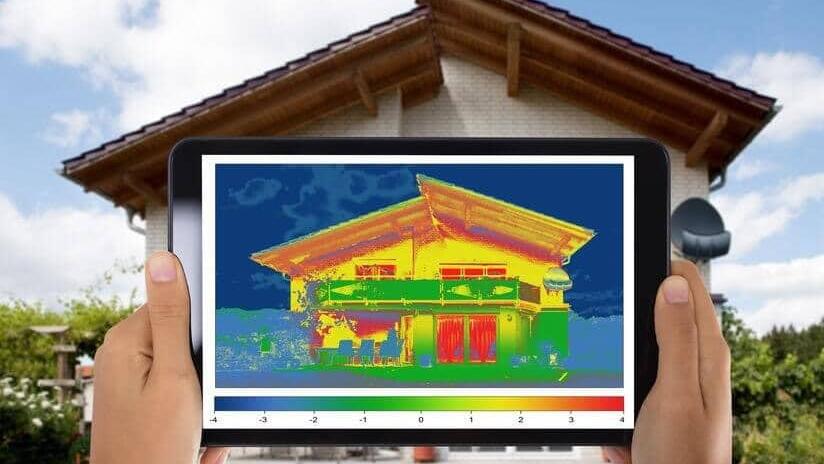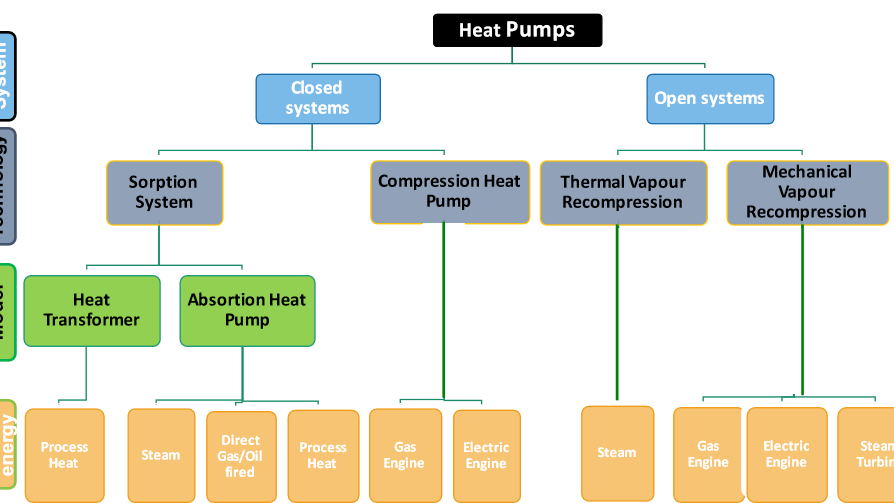 Energy Efficiency
Energy EfficiencyClimate neutrality and the potential of digital energy efficiency technologies - Five application examples
Summary
Germany is to meet its energy needs from renewable sources in 30 years. The conversion of Germanys energy supply to green and renewable is a done deal. But there is not much time left to switch completely from fossil fuels to a carbon dioxide-free, green energy supply and to massively reduce energy consumption. There is also a need for smart, intersectoral networking of all areas in which energy is consumed. In three steps to zero greenhouse gases by 2050 via an intermediate target of -65% in 2030 as part of the EU Green Deal. And even then, energy will not be available at "zero emissions
zero emissions" rates. After all, even the value added to generate renewable energy is not completely emission-free. If we also take into account the trends of growing global population and prosperity, there will be no way around reducing energy consumption in the future. Digital energy efficiency technologies can help reduce energy use in future. The following application examples show how digital energy efficiency solutions can help.
Open full article
Climate neutrality and the potential of digital energy efficiency technologies - Five application examples
Reducing CO2 emissions to zero in 30 years - utopian?
The conversion of Germany's energy supply to green and renewable is a done deal. In 30 years, the country is to meet its energy needs from renewable sources. To this end, the German government not only sealed the nuclear phase-out in 2011, but also initiated the phase-out of coal-fired power last year. In the coming years, nuclear power plants and fossil-fuel power plants will gradually be taken off the grid.
The country is to become climate-neutral by 2050!
The extent to which this goal is realistic and feasible has been investigated in a study entitled "Climate Neutral Germany 2050" commissioned by the think tank Agora Energiewende together with Agora Verkehrswende and the Climate Neutrality Foundation. The Öko-Institut, the Wuppertal Institute and Prognos were involved in the study.
Climate neutrality is feasible!
The conclusion of the study is: "Climate neutrality by 2050 is feasible!"
However, only under the condition of large investments paired with a holistic future program. This is how the contribution from EnergieZukunft sums it up.
In order to achieve climate neutrality, all sectors of the economy would also have to be fundamentally transformed. This is because climate transformation affects not only energy generation, but all sectors that require large amounts of energy. In addition to industry and agriculture, these are primarily transportation and buildings.
"In all areas of life and the economy, the fossil fuels coal, oil and gas must be replaced by electricity from renewables and green hydrogen
EnergyFuture
Together, they account for over 60 percent in Germany and thus bear the lion's share of all greenhouse gases, which, as is well known, lead to global warming. This makes CO2 reductions in these sectors in particular unavoidable and crucial for climate transformation .
Achieving climate neutrality by accelerating the energy transition
For Germany to achieve climate neutrality by 2050, CO2 emissions would have to be drastically reduced as early as 2030. According to the study's calculations, 65 percent less CO2 emissions would be required compared to the reference year 1990.
At the same time, the expansion of renewable energies would have to be accelerated. So that by 2030 the energy supply from renewable energies would be 70 percent. That would mean tripling the current level of wind and solar energy.
Achieving climate neutrality by 2050 means reducing CO2 emissions by a total of 95 percent by then.
But there is not much time left to switch completely from fossil fuels to a carbon dioxide-free, green energy supply and to massively reduce energy consumption. In addition to increasing energy efficiency, we also need smart, intersectoral networking of all areas in which energy is consumed.
 Thinktank Agora Energiewende together with Agora Verkehrswende and the Climate Neutrality Foundation - Infographic of the study "Climate Neutral Germany 2050" - Prognos, Öko-Institut, Wuppertal Institut
Thinktank Agora Energiewende together with Agora Verkehrswende and the Climate Neutrality Foundation - Infographic of the study "Climate Neutral Germany 2050" - Prognos, Öko-Institut, Wuppertal Institut
Study "Climate Neutral Germany" - In three steps to zero greenhouse gases by 2050 via an intermediate target of -65% in 2030 as part of the EU Green Deal
Further background information:
"How Germany will become climate neutral by 2050" - press release from Öko-Institut.
Economical use of renewable energy as well
Meeting energy needs entirely from renewable energies and green hydrogen production will hardly succeed without the development of a corresponding infrastructure. Energy efficiency and climate protection technologies create the conditions for this.
Addressed to the market in the form of solutions and business cases, they offer the opportunity for a climate-friendly transformation of the economy. In addition, they make it possible to use the precious commodity "energy" sparingly and efficiently.
After all, it will take some time before the state of 100 percent renewable energy supply is reached. And even then, energy will not be available at "zero emissions" rates. After all, even the value added to generate renewable energy is not completely emission-free.
If we also take into account the trends of increasing global energy demand and growing global population and prosperity, there will be no way around reducing energy consumption in the future. Digital energy efficiency technologies can help here. The following application examples show how.
5 application examples for digital energy efficiency solutions
1st application example: Self-learning automated radiator thermostats for digitalized heat management
Provider: vilisto GmbH
Self-learning radiator thermostats that adjust themselves according to user behavior in rooms and automatically regulate heating up or down. This is a patented energy efficiency solution from vilisto GmbH. Its radiator thermostats are equipped with sensors. They detect when and how a room is being used. In addition, local weather data is incorporated into the control of the thermostats in order to automatically heat rooms to the desired temperatures in an optimized manner or to automatically regulate unused rooms down. If necessary, heaters can be controlled manually. The thermostats enable user-friendly, demand-based heat management in rooms of buildings such as office buildings, public administration buildings or educational institutions. They enable CO2 emissions to be saved and energy costs to be reduced at the same time. As a result, the technology contributes to an improved CO2 balance of the buildings.
2nd application example: Smart pumps linked to an IoT platform for existing buildings.
Provider: perto GmbH
Smart pumps from perto GmbH are also aimed at intelligent heat management. The only difference is that here the energy and CO2 savings already take place in the boiler room. Their pumps are equipped with smart measurement technology and connected to an Internet-of-Things (IoT) platform. This allows heating systems to be controlled remotely as well as monitored remotely based on real-time data. In addition, self-learning algorithms can detect inefficiencies and eliminate them by exploiting optimization opportunities.
3. application example: automated control reduces energy consumption in buildings
Provider: recogizer GmbH
EnergyControl from recogizer GmbH ensures an efficient energy approach in buildings. With the help of artificial intelligence, they support operators of retail properties, office buildings, hotels and public buildings in permanently saving energy. Without any manual effort, their solution curbs the energy consumption of heating, ventilation and air conditioning systems. Forecast data is also used to create an optimal indoor climate. In addition, building data and user behavior are imported. energyControl obtains data for its predictive control every 15 minutes. Learn more about the energyControl building solution...

4. application example: Efficiency PACKS convert waste heat into clean electricity
Provider: Orcan Energy AG
With its "efficiency packs", Orcan Energy AG has developed an energy efficiency solution that takes a different approach to heat management and energy supply. Their solution is not so much focused on reducing energy consumption, but rather on the energetic utilization of waste heat. Their patented technology uses surplus heat to generate CO2-free electricity. The heat comes from engines, industrial and cooling processes, for example. Their "efficiency packs" can be installed with little effort. It can simply be used "plug & play".
5. application example: heat recovery from showers
Supplier: Joulia SA
Joulia also specializes in heat recovery with its shower channel technology, for which the company has won several awards. Their shower channels, named Joulia-Inline and Joulia-Twinline use the heat energy of shower water. They process this and make it available for energy supply in homes. Only cold wastewater is discharged into the sewage system. The energy remains in the house. Your efficiency solution saves energy and CO2 emissions while maximizing comfort.
Conclusion: Climate neutrality and digital energy efficiency technologies
The application examples have made it clear that digital energy efficiency technologies can accelerate climate transformation. But how can such applications be scaled up and rolled out across the board? What are the coupling effects and synergies with other technologies? In which application areas can digital energy efficiency technologies achieve particularly great benefits and added value?



